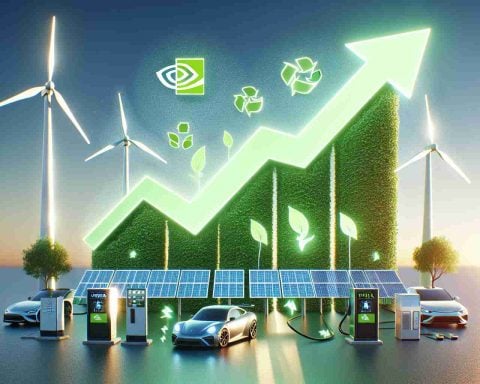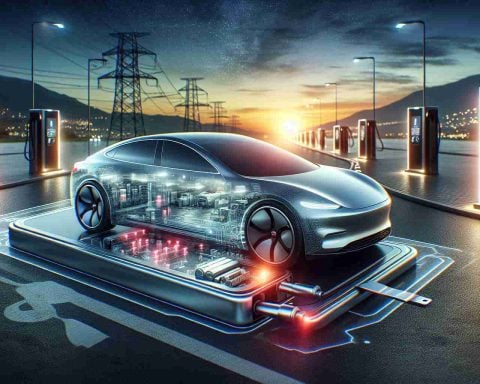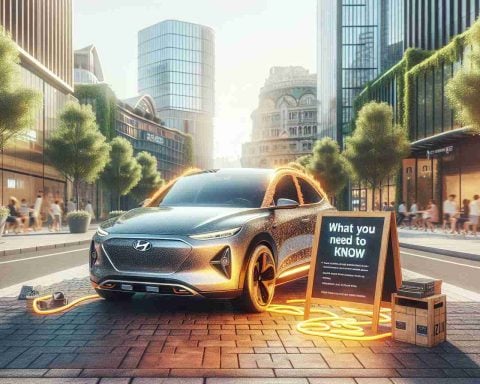- Many EVs can experience up to 50% battery capacity loss in extreme cold, affecting range significantly.
- Testing revealed that models like the Toyota bZ4X saw a 37% range drop at -15°C (5°F), while others like the Chevrolet Silverado EV only lost 14%.
- The EV cabin heater consumes power directly from the battery, leading to substantial range reductions even in moderately cold temperatures.
- To maximize battery life in winter, pre-condition your vehicle while plugged in, use eco modes, and avoid rapid acceleration.
- Understanding your EV’s performance in cold weather is crucial for effective travel planning and to prevent unexpected issues on the road.
As winter grips the roads, electric vehicle (EV) enthusiasts may be in for a frosty surprise. Recent testing in icy Canadian conditions showed that many EVs can lose nearly half their battery capacity in severe cold, leaving drivers in a lurch on long journeys.
The Canadian Automobile Association recently put 13 popular EV models through rigorous cold weather assessments, revealing staggering range drops. When temperatures dip as low as -15°C (5°F), models like the coveted Toyota bZ4X saw their range plummet by a shocking 37%, while robust contenders like the Chevrolet Silverado EV and Polestar 2 only lost 14%—a stark difference that could impact your travel plans.
So, why do these chilly conditions wreak havoc on battery performance? It all boils down to the EV’s cabin heater, which drains power directly from the battery, unlike traditional gas engines that harness waste heat. A startling 12% reduction in range can come just from the heater running on a brisk 20°F day.
To stretch those battery miles, experts recommend pre-conditioning your vehicle while it’s still plugged in, using eco modes to conserve energy, and avoiding aggressive acceleration. Essentially, the mantra of “slow and steady wins the race” rings true in the EV world as well.
As winter thaws into spring, stay savvy and informed about your electric car’s capabilities in frigid weather. Embrace these tips to keep cruising without the chills!
Surviving Winter: Key Insights for Electric Vehicle Owners
As colder temperatures draw near, electric vehicle (EV) owners must adapt to unique challenges posed by winter weather. Recent testing and research have unveiled important aspects of EV performance in frigid conditions, making it crucial for drivers to understand how to navigate the chilling season effectively.
New Findings on EV Battery Performance
A recent study by the Canadian Automobile Association tested 13 popular EV models under extreme cold conditions, revealing significant data on battery performance. Here are some insights:
– Severe Range Reduction: In temperatures as low as -15°C (5°F), the Toyota bZ4X experienced a dramatic 37% drop in range, while others, like the Chevrolet Silverado EV and Polestar 2, fared better with only a 14% reduction. Such disparities highlight the importance of selecting the right EV based on climate.
– Heat Impact on Range: The cabin heater is primarily responsible for the depletion of battery power in cold weather. A chilling fact is that the heater alone can account for a 12% reduction in range on a typical 20°F day, which is crucial for drivers to consider while planning their journeys.
– Preconditioning Strategies: To mitigate range loss, experts suggest pre-conditioning the vehicle while still plugged in, utilizing eco modes for driving, and minimizing aggressive driving to extend battery life in winter conditions.
Key Questions and Answers
1. How can EV owners optimize battery life during winter?
– EV owners can optimize battery life by pre-conditioning their vehicle while it is charging, using eco driving modes, and adopting cautious acceleration techniques. These practices help preserve battery energy for longer ranges.
2. Which EV models perform better in cold weather?
– According to tests, models like the Chevrolet Silverado EV and Polestar 2 demonstrate better performance in cold temperatures, losing only 14% of their range compared to higher losses in other models. This makes them potentially better choices for those who frequently drive in colder climates.
3. What technology advancements are being made to improve EV performance in cold weather?
– Manufacturers are investing in thermal management systems to enhance battery efficiency and range during low temperatures. Innovations in battery chemistry and insulation technology aim to minimize the adverse effects of cold on overall performance.
Additional Insights
– Market Forecasts: The EV market is projected to show continued growth despite seasonal challenges. Innovations in battery technology are expected to address cold-weather performance, helping drive adoption rates even in colder regions.
– Sustainability Trends: As more consumers focus on energy efficiency and sustainability, manufacturers are exploring eco-friendly materials and production methods to improve the environmental impact of EVs.
– Future Predictions: As technology evolves, we can expect improved battery performance year-round, including winter months. Research into solid-state batteries and advanced thermal management could lead to significant enhancements.
For more information about electric vehicles and how to navigate winter driving conditions, visit CAA.

















